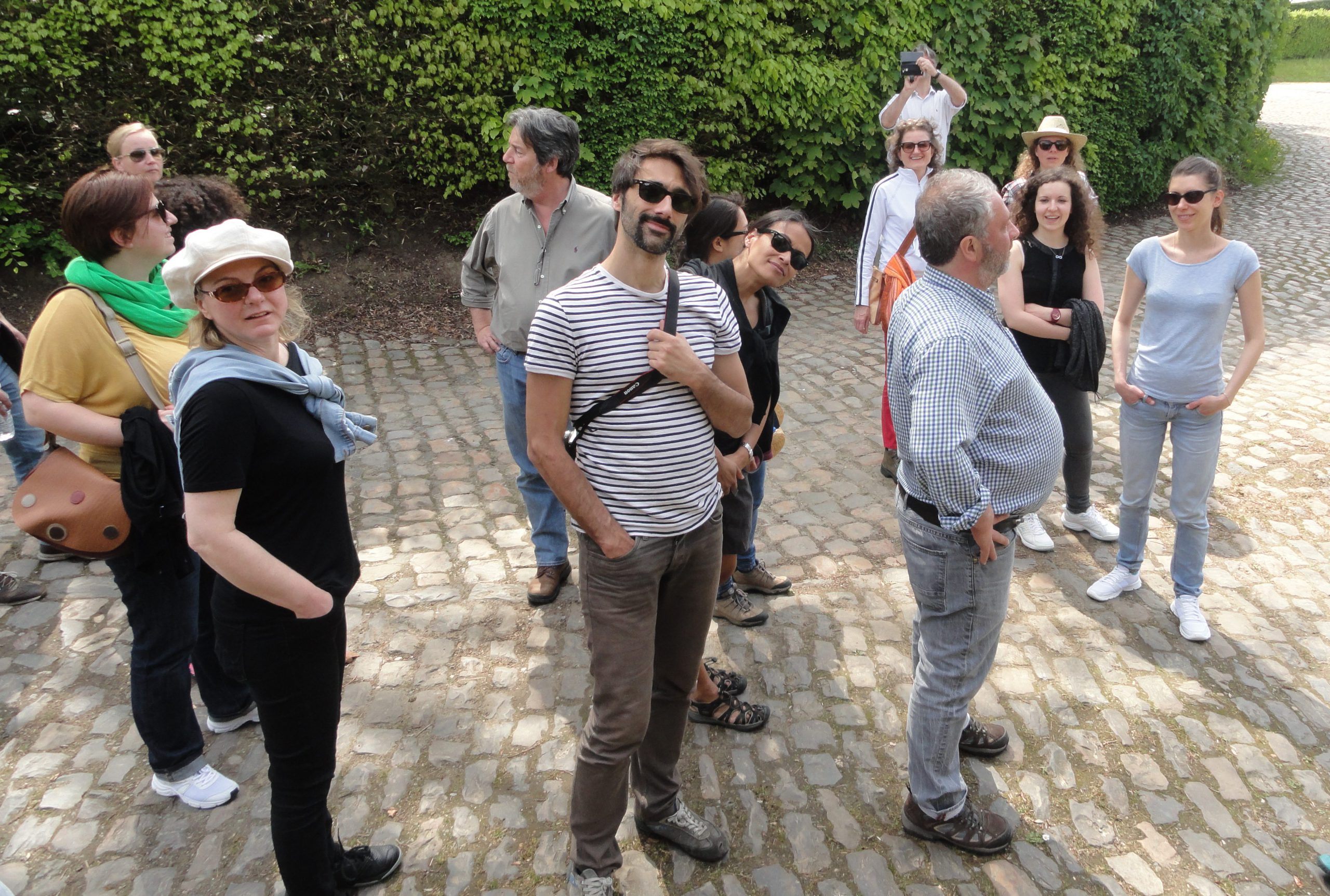
A day at cApStAn
Watermael-Boitsfort is a verdant residential suburb of Brussels, bordering the Forêt de Soignes, or Sonian Wood. Famous Belgian surrealist painter Paul Delvaux has lived here; fauvist painter and sculptor Rik Wouters lived just around the corner; and the district is still known to be an artsy place, with its own Académie des Beaux-Arts and vibrant cultural centre. The main square, with its weekly market, cafes and restaurants gives the place a “village” look and feel. Tucked away in a quiet street not far from the main square is the townhouse where cApStAn has its headquarters. The offices feel more like a home than a work place, with a large airy common area to have lunch, chat, rest, read or even play table football, an indoor patio with a bench and a terrace overlooking the garden. Staff members take turns to shop and prepare a buffet lunch for the others. Altogether a rather peaceful and pleasant setting, away from the bustle of the city, at the same time easily accessible.
A cApStAn is a marine term: it is a sort of pulley that makes it possible to lift a 5-ton anchor with the force of just 3 sailors. Andrea, Steve and Apor are the three co-founders of the company (hence the upper case letters in ‘cApStAn’), and it was Steve, the “hands-on CEO”, as he defines himself, who came to welcome me. His passion and enthusiasm are certainly a driving force and inspiration for anyone who works with him. Steve introduced me to other members of the team, a very friendly, international, dynamic and highly qualified group of people coming from Belgium, Romania, Turkey, Korea, India, Nepal, Italy and France, to name but a few—not all were present. They coordinate a network of more than two hundred experts, mainly linguists, who work remotely, from their own countries. Roles and functions at cApStAn’s core team are clearly defined yet I could see that there is a constant exchange of thoughts and ideas, even during coffee breaks and relaxation time, and everyone’s input is valued highly. “Quality” is the buzz word here, and there is a striking level of perfectionism, with rigorous procedures set in place to regulate all aspects of work.
In the course of the day one-to-one meetings had been set up for me to get a feel of what the company’s activity is about and I also attended a webinar with the team from the Philadelphia office in the US. There was a lot for me to take in in such a short time, including new terminology and methodological and technological aspects. Despite the fact that I have been exposed to different cultures and languages, I was struck by the complexity of the field and by how challenging it is to ensure equivalence of meaning and relevance in content adaptation across regions, cultures and languages. All the more so for the international large scale assessments (ILSAs), in which cApStAn was a pioneer in linguistic quality assurance. This is the field where they established their unique track record and reputation since 2000. The PISA 2018 project alone (OECD’s Programme for International Student Assessment) features one hundred different country/language combinations covering 85 participating countries. Quite mind boggling!
The best way for me to understand some of these issues was to sit next to the project managers while they were at work. I was impressed by the level of competence and by the extremely detailed methodology that has been put in place to handle projects. The company’s approach is holistic, starting well before translation, with translatability assessment on the source text, and ending with quantitative/qualitative reporting of verifier interventions at the end of the process. It is also modular, meaning that clients can choose to entrust all or only parts of the process to the company. I had not realised there are so many different aspects to take into account, at each step, to ensure optimal correspondence of content. Every single sentence, or “segment”, as they say here, is checked against translatability categories (for “upstream” work) or intervention categories (for the verification part). The linguists select these categories from drop down menus. Furthermore, the company is technologically advanced: in addition to using computer assisted translation tools (CAT tools), they develop their macros and web-based quality assurance applications in-house (eg. VeryFire, MemoryLn). No one here is worried about machine translation replacing human translations, as the linguists work in a technologically rich environment and are already experimenting with effective combinations of automation and human discernment.
I thoroughly enjoyed the experience at cApStAn and the interaction with the members of the team. If I were to define, from my position as an outsider, what the key pillars of the company are, I would include the strong and long-lasting customer relationships, the drive for constant innovation, the highly qualified and motivated staff members and the underlying “passion for excellence”, which clearly comes across in all aspects of the company’s activity.